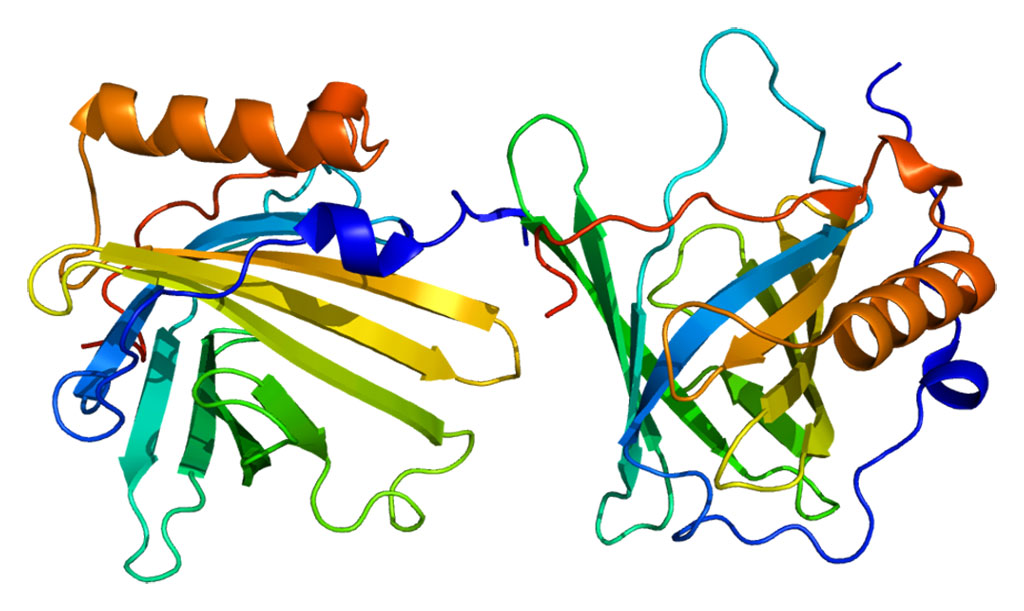A New Approach for Rapid Detection of Acute Kidney Injury in Children
By LabMedica International staff writers
Posted on 10 Nov 2020
Measurement of a urinary protein combined with a calculated renal angina index was used to identify the early signs of acute kidney injury in children.Posted on 10 Nov 2020
Acute kidney injury (AKI), a common complication in pediatric intensive care units (PICU), is associated with longer hospital stay and increased mortality. Diagnosis of AKI depends on identifying elevation of creatinine in the blood. However, creatinine levels rise very slowly after a kidney injury, frequently delaying recognition of AKI.

Image: Structure of the neutrophil gelatinase-associated lipocalin (uNGAL) protein (Photo courtesy of Wikimedia Commons)
Searching for a more rapid way to diagnose AKI, investigators at the University of Liverpool (United Kingdom) evaluated the diagnostic and prognostic value of initial and serial concentrations of the protein neutrophil gelatinase-associated lipocalin in urine (uNGAL) and in plasma (pNGAL). Serum creatinine was measured using an enzymatic (Creatininase/Creatinase) method developed by Abbott Diagnostics for use on the Abbott Architect Chemistry Analyzer. uNGAL was measured using the ARCHITECT Urine NGAL assay (Abbott Diagnostics, IL, USA) and pNGAL was measured using a commercial ELISA kit (R&D Systems Inc., Minneapolis, MN, USA).
In addition, a calculated value - the renal angina index (RAI) - was developed as a screening tool to detect those at risk of AKI in intensive care units (ICU). RAI was calculated retrospectively according to previously published protocols, using data obtained upon admission to PICU, and their first serum creatinine measurement on their first day in PICU.
For the current study, 657 children were recruited, with 104 meeting the criteria for severe AKI (15.8%) and 47 (7.2%) requiring renal replacement therapy (RRT). Severe AKI was associated with increased length of stay, hospital acquired infection, and mortality.
Results obtained over the course of the study revealed that the combination of RAI and urinary NGAL on the first day of PICU admission provided an accurate prediction for severe AKI.
Contributing author Dr. Steven J. McWilliam, senior lecturer in pediatric clinical pharmacology at the University of Liverpool, said, "The results of this study are extremely exciting. The renal angina index is a simple calculation that could easily be automatically provided in electronic medical records at PICU admission. NGAL assays compatible with most clinical laboratory analyzers are now widely available, making its real-time measurement in these critically unwell children realistic. We are now in a great position to investigate whether having these results available in real-time in PICUs could lead to reduced rates of AKI in these children, and whether they can be used to effectively target protective strategies to those at high risk of AKI."
The study was published in the October 29, 2020, online edition of the journal PLOS ONE.
Related Links:
University of Liverpool
Abbott Diagnostics
R&D Systems Inc.














